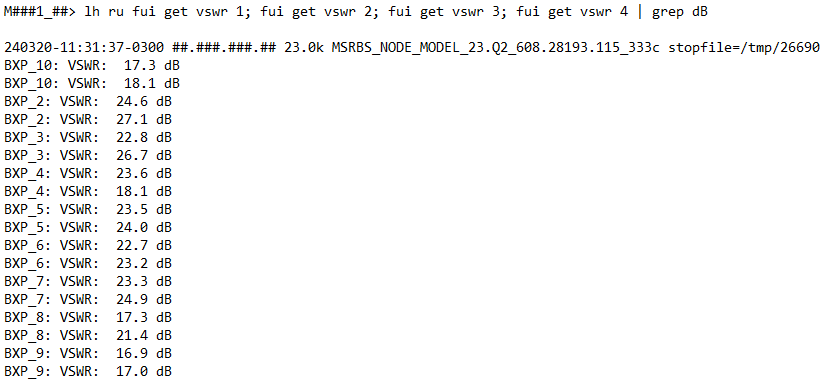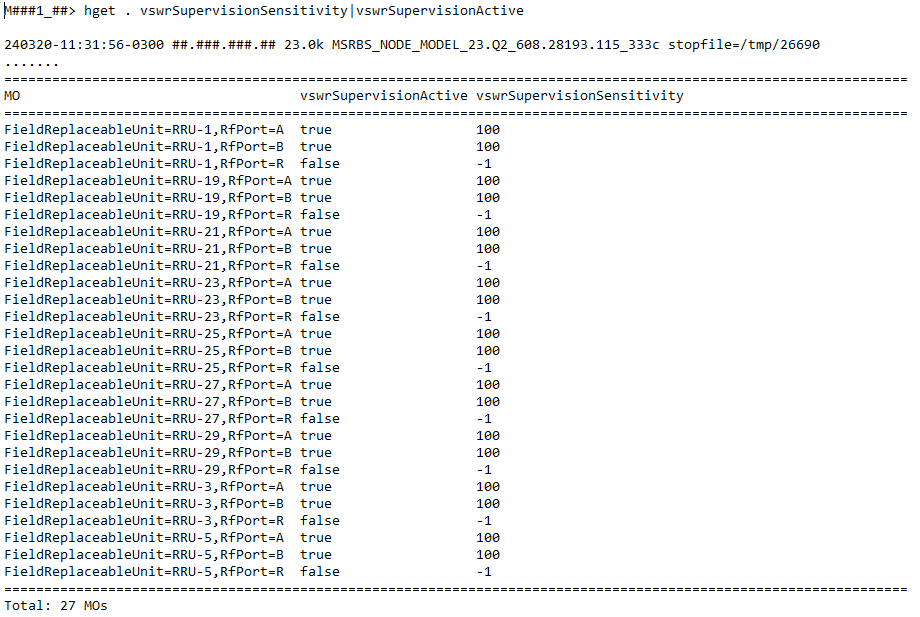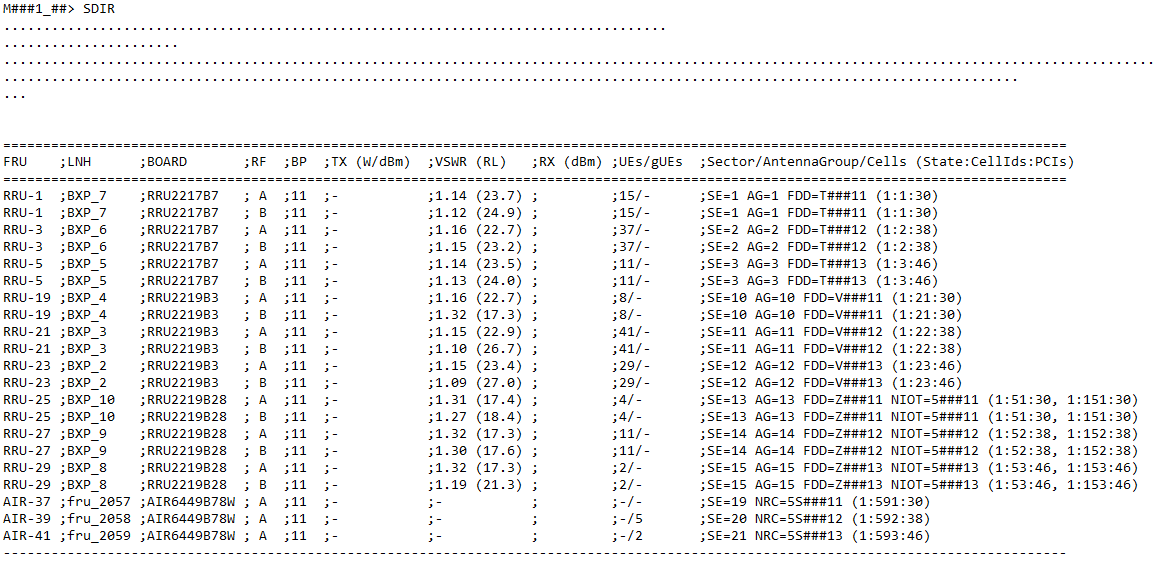Understanding VSWR and Its Importance in MRAT (4G/5G) Sites
The VSWR (Voltage Standing Wave Ratio) is a key metric in telecommunications, particularly in 4G sites, as it measures how efficiently RF energy is transmitted through antennas and cables. It indicates the impedance matching between the transmitter and the antenna, directly reflecting potential energy losses in the system. An optimal VSWR value signifies efficient transmission, while a higher value indicates mismatches, leading to energy losses that can degrade network performance.
Why is VSWR Critical?
Maintaining an acceptable VSWR in 4G telecommunications sites is essential to ensure signal quality, minimize losses, and prevent reflected RF energy from damaging equipment. A value outside the acceptable range can degrade services, resulting in poor call quality, dropped connections, or data service disruptions.
Acceptable VSWR Threshold
In 4G systems, the Return Loss (RL), which is inversely related to VSWR, is used to assess signal reflection. A RL value exceeding 15.56 dB is generally required. When RL is above this threshold, it ensures that energy losses are minimal, and the system is operating efficiently. A lower RL value signals the need for corrective actions to address mismatches and restore transmission quality.
How to Improve VSWR?
If the VSWR falls below acceptable levels, several steps can be taken to resolve the issue:
-
Inspect Physical Connections: Loose or improperly connected cables can increase VSWR. Ensure that all connectors are tightly secured and inspect cables for any visible damage.
-
Replace Damaged Cables and Connectors: Cables showing signs of wear or corrosion should be replaced, as faulty cables can elevate VSWR.
-
System Calibration: Ensure that all measurement instruments and the site itself are properly calibrated to obtain accurate VSWR readings.
-
Check Antenna Integrity: Damaged or poorly installed antennas can cause signal reflections. Inspecting antennas for physical issues may help in correcting the VSWR.
Commands for VSWR Monitoring
To analyze VSWR in the field, several system commands can be used to assess performance across carriers:
-
Command:
lh ru fui get vswr 1; fui get vswr 2; fui get vswr 3; fui get vswr 4 | grep dB
This command retrieves the VSWR values across different carriers. For example:BXP_10: VSWR: 17.3 dB BXP_2: VSWR: 24.6 dB BXP_3: VSWR: 22.8 dB BXP_4: VSWR: 23.6 dBAll values above 15.56 dB indicate that the carriers are operating within acceptable limits, ensuring minimal RF energy losses.
-
Command:
hget . vswrSupervisionSensitivity|vswrSupervisionActive
This command checks the status of VSWR supervision and its sensitivity level for each RF port. For example:FieldReplaceableUnit=RRU-1,RfPort=A true 100 FieldReplaceableUnit=RRU-1,RfPort=B true 100The
vswrSupervisionActivefield shows that monitoring is active, ensuring that any deviations in VSWR are detected. -
Command:
sdir
This provides a comprehensive report, including VSWR (RL) values, transmission power, and user count. For example:FRU ;LNH ;RF ;VSWR (RL) RRU-1 ;BXP_7 ; A ;1.14 (23.7 dB) RRU-1 ;BXP_7 ; B ;1.12 (24.9 dB)With RL values well above 15.56 dB, this command confirms the system’s optimal transmission performance.
Final Thoughts
VSWR is a vital parameter for the reliable operation of telecommunications sites. Ensuring that the VSWR corresponds to a Return Loss above 15.56 dB is crucial for maintaining transmission efficiency and minimizing signal loss. By monitoring and adjusting VSWR as needed, using the appropriate commands and maintenance strategies, we can ensure that the network meets performance standards and delivers high-quality service.
This revised text ensures technical clarity and provides the necessary details for effective VSWR monitoring in 4G/5G sites. Let me know if you need further adjustments!
LinkedIn (in Portuguese): ![]()
Check out how these commands work in a live MRAT (4G-5G) site:
lh ru fui get vswr 1; fui get vswr 2; fui get vswr 3; fui get vswr 4 | grep dB
hget . vswrSupervisionSensitivity|vswrSupervisionActive
sdir
LinkedIn: ![]()


